For Her Dad, Mario’s 98th Birthday
On Tuesday, March 17th, 2015
From Italy
Artwork by Ing-On Vibulbhan-Watts
Tuesday, March 17th, 2015
Dear Ing,
I’m really happy that you have appreciated my “little” present for your first grandchild’s oncoming birth…Every new life is a miracle that is to be welcomed with a sentiment of gratitude and immense joy. Today my dad celebrates his “98th” birthday!! And this fills me with great pride and excitement. God may grant us many more years together! I do really love my father, he is “my myth”, as he is a special person: whoever knows him cannot forget his delicate manners. He knows how to make everybody feel at ease, he is very human, funny, generous, sensitive, warm-hearted and sociable. His sweetness conquers all. Besides being a sympathetic man, he is even better than me at recollecting his past experiences! He is “a living archive” of memories, impressions, traditions, tales… He writes poems, too! How great to talk to him. He has a smile for everyone and above all he can listen to anyone with care and passion, always finding good words to change one’s “blue” mood. In attachment you will find the poem I have written for him, of course I have translated it into English.
A big hug, 🙂
Attachments area
Preview attachment When I asked you for the sky on my dad Mario’s birthday.docx
Hi Roberta,
First of all please say “HAPPY BIRTHDAY :)” to your father for us. We wish him all the best of happiness and health. With all the love that you and your family are giving him, he is the happiest man on earth. Add our love to him also.
Secondly I love your poem for your father. It is very meaningful, and your composition is from the true love of a daughter that loves her father very much. I will organize your poems and our email communications and post on the page of, “Three Very Beautiful Italian Ladies”. It might take a little while because I have so many things to do, some personal urgent, some are peace projects and now the weather is getting warmer we have to take care of our shop. I will send you the link after I post your poems. If you have time to translate your father poems I would love to read them and post them with your poems project.
Thirdly, I recorded my mother voice when we were talking on the phone from Thailand before she passes away. I videoed our conversations when she came to visit us in US. I wonder if you have a chance to do so with your father. I wish I can talk to him about what life was like when he was young. How the first and second world wars affected him, family and society as a whole. Your father saw some of the most important changes in human development, especially with technology. With all of his life time of experience and knowledge you can write a great book that can be useful for younger generations.
You sent me your Human Rights project which correlates with the, “Selma march 50 Years Later”, event on March 7 of this year. I think it might be good for your students to view the project that I just posted on my Blog. The links are the following: https://ingpeaceproject.com/blog/ or https://ingpeaceproject.com/2015/03/16/selma-march-50-years-later/
I hope you and your family enjoy beautiful weather and flowers of spring.
All the best,
Ing
3.18.15
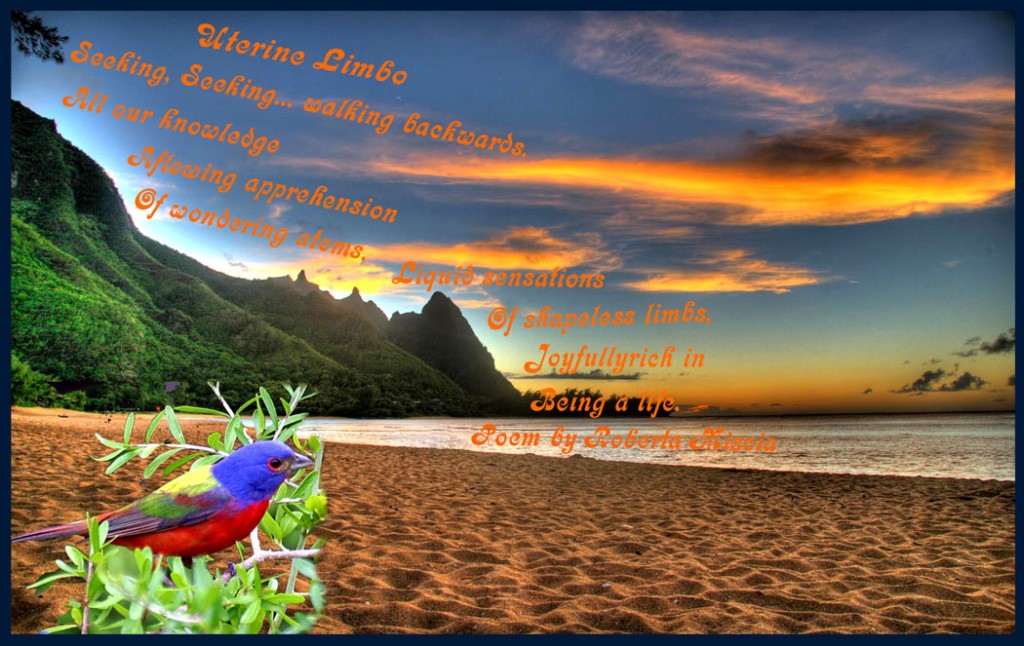 Poem by Roberta Miscia Artwork by Ing-On Vibulbhan-Watts
Poem by Roberta Miscia Artwork by Ing-On Vibulbhan-Watts
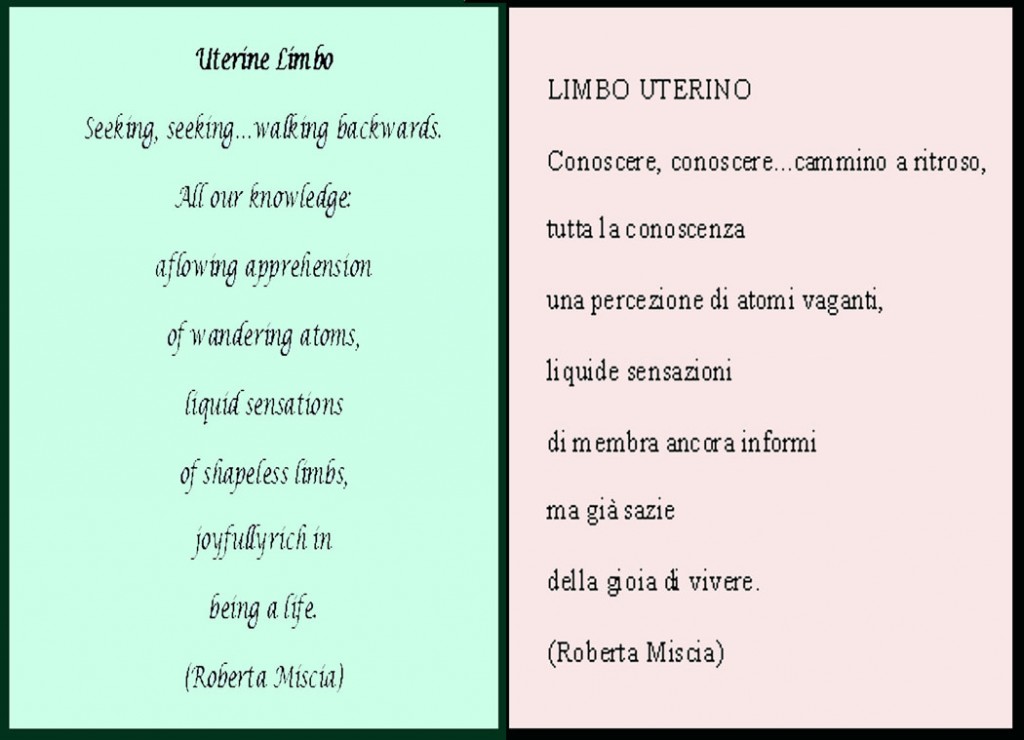
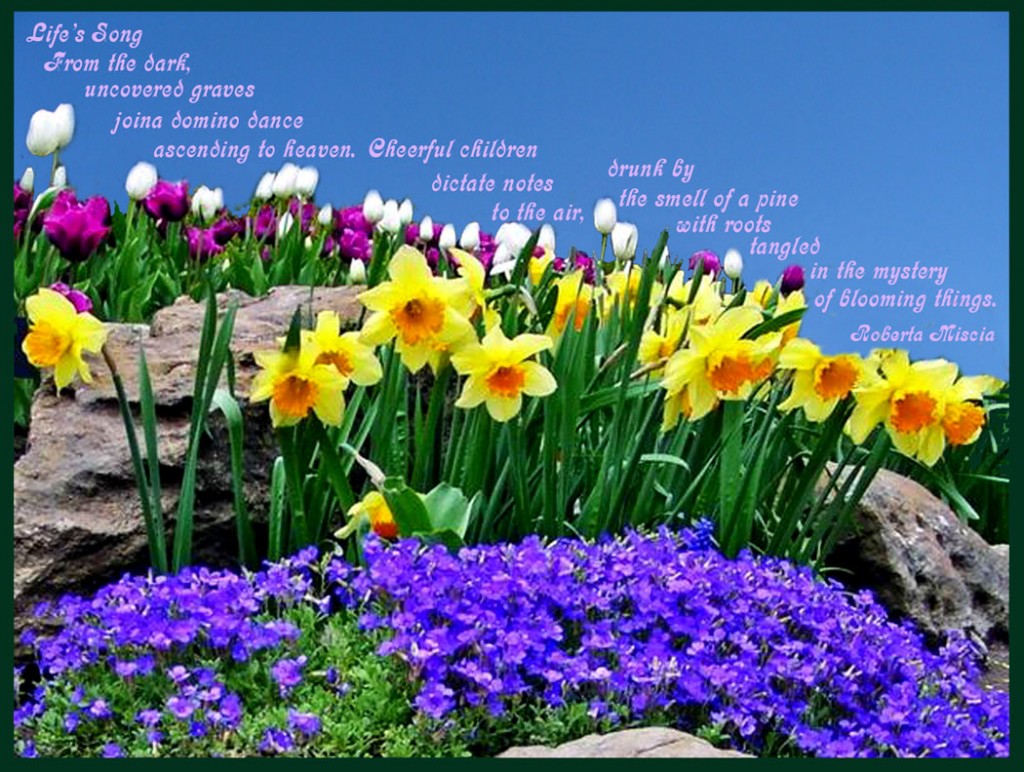 Poem by Roberta Miscia Artwork by Ing-On Vibulbhan-Watts
Poem by Roberta Miscia Artwork by Ing-On Vibulbhan-Watts
Thank you for your two lovely poems. I enjoyed reading them. I will let you know after I have posted them on my website. I have to finish a few more projects.
I wonder if you are working with your students writing their comments on my peace poster that you took when you came to our shop. If you did work on my poster please copy them and send as attachments. You do not have to send the poster to me. If you did not work with my poster, it is OK. I hope you will have time to organize students to write their comments on “What does peace mean to you?” in the future.
I like your poems a lot. Please keep up your good work then you can publish it as a book one day.
Please take care of yourself and your family.
Best,
Ing
3.10.15
I took the above pictures from the Internet. Sorry, I did not know the names of the photographers. I apologize for missing the credited names. Thanks to the photographers who took these pictures. They are beautiful. I appreciate and love these scenes and spring flowers.
Ing-On Vibulbhan-Watts, 4.14.2015
MANY THANKS!!
roberta.miscia@alice.it roberta.miscia@alice.it
Wednesday, April 16, 2015
Hi Ing, thanks for your precious gift of friendship! Half an hour ago I saw your blog and with great “SURPRISE” I’ve been extraordinarily impressed by the beauty of your creations in giving ‘a new life’ to my poems!! You’re really awesome! As I’m visiting my father the day after tomorrow, I’ll show him the sweet and juicy fruits of your splendid hands and heart!
Thanks for everything, any of my words are not enough to express all my joy, I would like to be able to celebrate you in the same way as you’ve been able to listen to me and make room to my profoundest emotions.
A big hug to you and John,
and a KISS!
🙂 Good night, Roberta Miscia
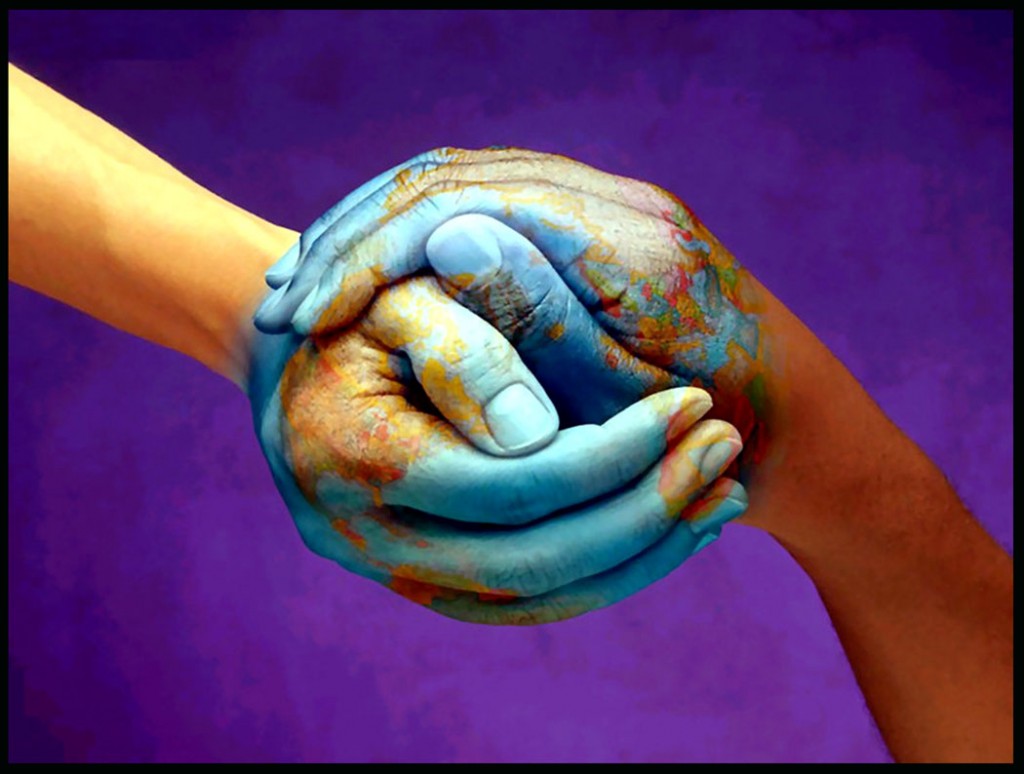 The PEACE artwork, Roberta sent to me on Wednesday, April 16, 2015
The PEACE artwork, Roberta sent to me on Wednesday, April 16, 2015
Italy has a long history of civilization, rich with culture in many forms. I studied about Galileo, one of the great scientists of the world, in grade school in Thailand. His inventions such as the telescope and other discoveries paved the way for future scientists. He was confined under house arrest until the end of his life because he supported Heliocentrism, which is the astronomical model in which the Earth and planets revolve around the Sun at the center of the Solar System.
We all learn in different ways, hopefully finding the truth. In the past and even at present some events are sad and some events bring us happiness. Just like water runs to the lowest ground, some water will channel to the sea or river and some will dry out before it reaches to the destination. But it will moisten the soil which gives life to living things. Knowledge from the research will remain and be passed on for the next generation to utilize and accumulate more knowledge providing us the possibility of discovering new inventions. Hopefully it will be used for the betterment of human civilization and well being of the earth as a whole.
Thanks to Roberta Miscia who is an English teacher at LICEO SCIENTIFICO STATALE “G. GALILEI” – Via Balilla 34 – Via Vespucci 175, 65121 Pescara (Italy), in Italy she is interested in my peace project. She communicates with me about more than just my peace project. Because of knowing her I would like to study more about her culture. Besides Italian food I also love Italian art. I have spent time studying Italian art. It is a happy time for me mesmerizing myself with the work of many great Italian artists.
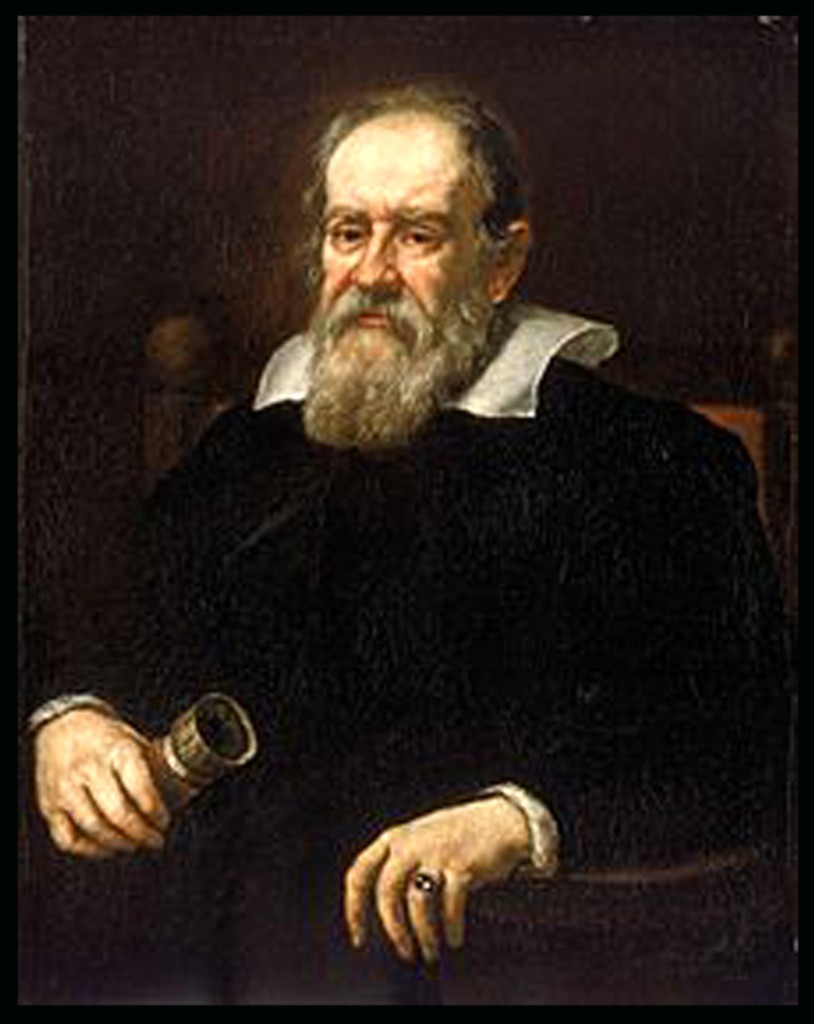 Galileo Galilei (Italian pronunciation: [?ali?l??o ?ali?l?i]; 15 February 1564[3]-8 January 1642), often known mononymously as Galileo, was an Italian physicist, mathematician, engineer, astronomer, and philosopher who played a major role in the scientific revolution during the Renaissance. His achievements include improvements to the telescope and consequent astronomical observations and support for Copernicanism. Galileo has been called the “father of modern observational astronomy“,[4] the “father of modern physics“,[5][6] the “father of science”,[6][7] and “the father of modern science”.[8]
Galileo Galilei (Italian pronunciation: [?ali?l??o ?ali?l?i]; 15 February 1564[3]-8 January 1642), often known mononymously as Galileo, was an Italian physicist, mathematician, engineer, astronomer, and philosopher who played a major role in the scientific revolution during the Renaissance. His achievements include improvements to the telescope and consequent astronomical observations and support for Copernicanism. Galileo has been called the “father of modern observational astronomy“,[4] the “father of modern physics“,[5][6] the “father of science”,[6][7] and “the father of modern science”.[8]
His contributions to observational astronomy include the telescopic confirmation of the phases of Venus, the discovery of the four largest satellites of Jupiter (named the Galilean moons in his honour), and the observation and analysis of sunspots. Galileo also worked in applied science and technology, inventing an improved military compass and other instruments.
Galileo’s championing of heliocentrism was controversial within his lifetime, a time when most subscribed to either geocentrism or the Tychonic system.[9] He met with opposition from astronomers, who doubted heliocentrism due to the absence of an observed stellar parallax.[9] The matter was investigated by the Roman Inquisition in 1615, which concluded that heliocentrism was false and contrary to scripture, placing works advocating the Copernican system on the index of banned books and forbidding Galileo from advocating heliocentrism.[9][10] Galileo later defended his views in Dialogue Concerning the Two Chief World Systems, which appeared to attack Pope Urban VIII, thus alienating not only the Pope but also the Jesuits, both of whom had supported Galileo up until this point.[9] He was tried by the Holy Office, then found “vehemently suspect of heresy“, was forced to recant, and spent the last nine years of his life under house arrest.[11][12] It was while Galileo was under house arrest that he wrote one of his finest works, Two New Sciences, in which he summarised the work he had done some forty years earlier, on the two sciences now called kinematics and strength of materials.[13][14]
Heliocentrism, or heliocentricism,[1] is the astronomical model in which the Earth and planets revolve around the Sun at the center of the Solar System. The word comes from the Greek (????? helios “sun” and ??????? kentron “center”). Historically, heliocentrism was opposed to geocentrism, which placed the Earth at the center. The notion that the Earth revolves around the Sun had been proposed as early as the 3rd century BC by Aristarchus of Samos,[2] but at least in the post-Ancient world Aristarchus’s heliocentrism attracted little attention—possibly because of the loss of scientific works of the Hellenistic Era.[3]
It was not until the 16th century that a fully predictive mathematical model of a heliocentric system was presented, by the Renaissance mathematician, astronomer, and Catholic cleric Nicolaus Copernicus, leading to the Copernican Revolution. In the following century, Johannes Kepler elaborated upon and expanded this model to include elliptical orbits, and Galileo Galilei presented supporting observations made using a telescope.
With the observations of William Herschel, Friedrich Bessel, and others, astronomers realized that the sun was not the center of the universe as heliocentrists at the time of Copernicus had supposed. Modern thinking is that there is no specific location that is the center of the universe, per Albert Einstein‘s principle of relativity.
For more information please visit the following links:
https://en.wikipedia.org/wiki/Galileo_Galilei
https://en.wikipedia.org/wiki/Heliocentrism
Italian art
From Wikipedia, the free encyclopedia
Part of a series on the Culture of Italy
History People Languages Traditions Mythology and folklore[show]
Art Literature Music and performing arts[show] Media[show]
Sport Monuments[show] Symbols[show]
The history of Italian art is the art of Italy through time and space. After Etruscan civilization and especially the Roman Republic and Empire that dominated this part of the world for many centuries, Italy was central to European art during the Renaissance. Italy also saw European artistic dominance in the 16th and 17th centuries with the Baroque artistic movement. It re-established a strong presence in the international art scene from the mid-19th century onwards, with movements such as the Macchiaioli, Futurism, Metaphysical, Novecento Italiano, Spatialism, Arte Povera, and Transavantgarde.
Italian art has influenced several major movements throughout the centuries and has produced several great artists, including painters and sculptors. Today, Italy has an important place in the international art scene, with several major art galleries, museums and exhibitions; major artistic centres in the country include its capital city, Rome, Florence, Venice, Milan, Naples, Turin, and other cities.
Etruscan art
Main article: Etruscan art
Etruscan bronze figures and a terracotta funerary reliefs include examples of a vigorous Central Italian tradition which had waned by the time Rome began building her empire on the peninsula.
The Etruscan paintings that have survived to modern times are mostly wall frescoes from graves, and mainly from Tarquinia. These are the most important example of pre-Roman figurative art in Italy known to scholars.
The frescoes consist of painting on top of fresh plaster, so that when the plaster is dried the painting becomes part of the plaster and an integral part of the wall, which helps it survive so well (indeed, almost all of surviving Etruscan and Roman painting is in fresco). Colours were made from stones and minerals in different colours that ground up and mixed in a medium, and fine brushes were made of animal hair (even the best brushes are produced with ox hair). From the mid 4th century BC chiaroscuro began to be used to portray depth and volume. Sometimes scenes of everyday life are portrayed, but more often traditional mythological scenes. The concept of proportion does not appear in any surviving frescoes and we frequently find portrayals of animals or men with some body-parts out of proportion. One of the best-known Etruscan frescoes is that of Tomb of the Lioness at Tarquinia.
Roman art
Main article: Roman art
Rome under the emperor Constantine.
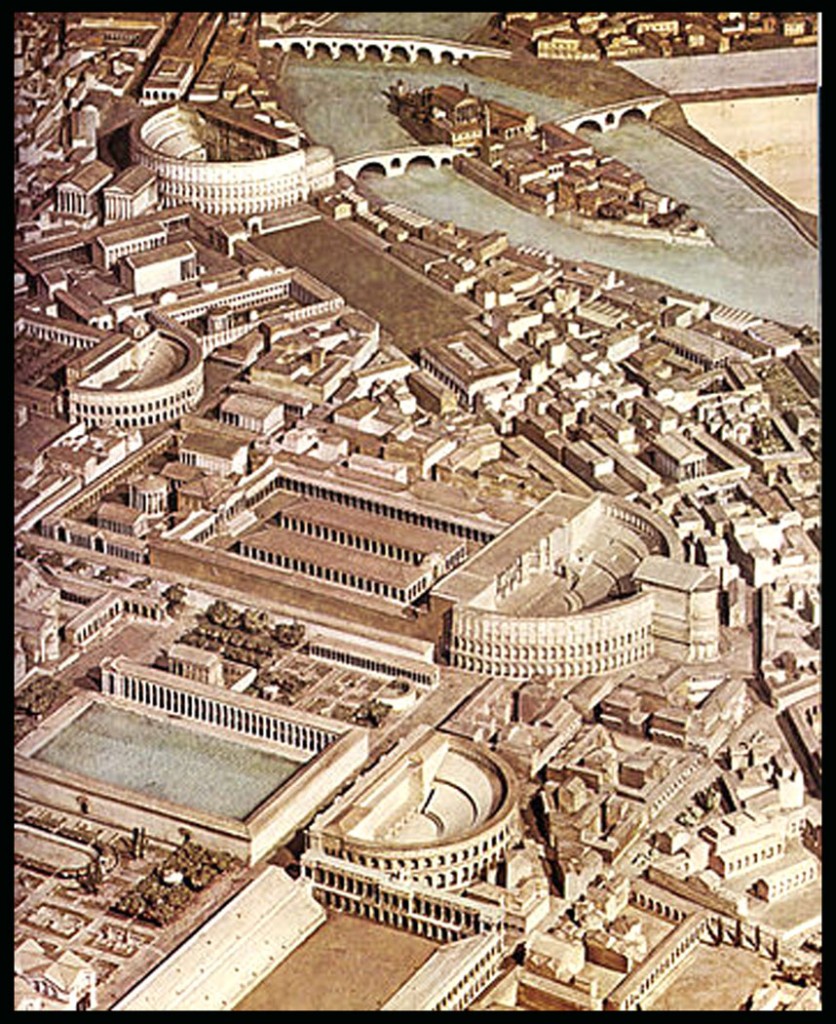 The Etruscans were responsible for constructing Rome’s earliest monumental buildings. Roman temples and houses were closely based on Etruscan models. Elements of Etruscan influence in Roman temples included the podium and the emphasis on the front at the expense of the remaining three sides. Large Etruscan houses were grouped around a central hall in much the same way as Roman town large houses were later built around an atrium. The influence of Etruscan architecture gradually declined during the republic in the face of influences (particularly Greek) from elsewhere. Etruscan architecture was itself influenced by the Greeks, so that when the Romans adopted Greek styles, it was not a totally alien culture. During the republic there was probably a steady absorption of architectural influences, mainly from the Hellenistic world, but after the fall of Syracuse in 211 BC, Greek works of art flooded into Rome. During the 2nd century BC, the flow of these works, and more important, Greek craftsmen, continued, thus decisively influencing the development of Roman architecture. By the end of the republic, when Vitruvius wrote his treatise on architecture, Greek architectural theory and example were dominant. With the expansion of the empire, Roman architecture spread over a wide area, used for both public buildings and some larger private ones. In many areas elements of style were influenced by local tastes, particularly decoration, but the architecture remained recognizably Roman. Styles of vernacular architecture were influenced to varying degrees by Roman architecture, and in many regions Roman and native elements are found combined in the same building.
The Etruscans were responsible for constructing Rome’s earliest monumental buildings. Roman temples and houses were closely based on Etruscan models. Elements of Etruscan influence in Roman temples included the podium and the emphasis on the front at the expense of the remaining three sides. Large Etruscan houses were grouped around a central hall in much the same way as Roman town large houses were later built around an atrium. The influence of Etruscan architecture gradually declined during the republic in the face of influences (particularly Greek) from elsewhere. Etruscan architecture was itself influenced by the Greeks, so that when the Romans adopted Greek styles, it was not a totally alien culture. During the republic there was probably a steady absorption of architectural influences, mainly from the Hellenistic world, but after the fall of Syracuse in 211 BC, Greek works of art flooded into Rome. During the 2nd century BC, the flow of these works, and more important, Greek craftsmen, continued, thus decisively influencing the development of Roman architecture. By the end of the republic, when Vitruvius wrote his treatise on architecture, Greek architectural theory and example were dominant. With the expansion of the empire, Roman architecture spread over a wide area, used for both public buildings and some larger private ones. In many areas elements of style were influenced by local tastes, particularly decoration, but the architecture remained recognizably Roman. Styles of vernacular architecture were influenced to varying degrees by Roman architecture, and in many regions Roman and native elements are found combined in the same building.
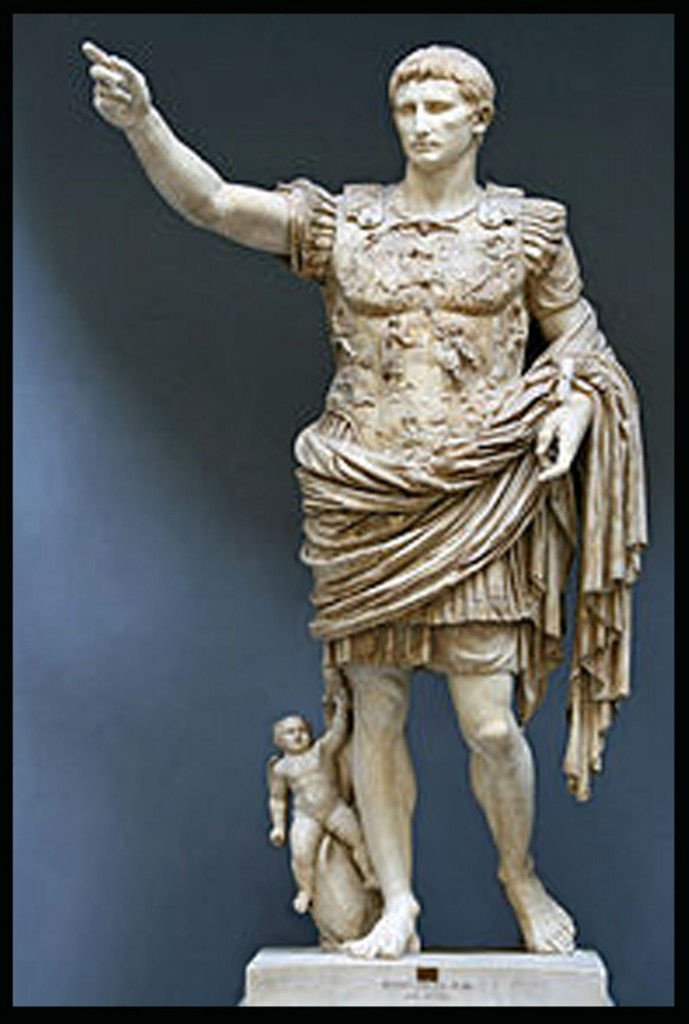 The statue known as the Augustus of Prima Porta.
The statue known as the Augustus of Prima Porta.
By the first century AD, Rome had become the biggest and most advanced city in the world. The ancient Romans came up with new technologies to improve the city’s sanitation systems, roads, and buildings. They developed a system of aqueducts that piped freshwater into the city, and they built sewers that removed the city’s waste. The wealthiest Romans lived in large houses with gardens. Most of the population, however, lived in apartment buildings made of stone, concrete, or limestone. The Romans developed new techniques and used materials such as volcanic soil from Pozzuoli, a village near Naples, to make their cement harder and stronger. This concrete allowed them to build large apartment buildings called insulae.
Wallpaintings decorated the houses of the wealthy. Paintings often showed garden landscapes, events from Greek and Roman mythology, historical scenes, or scenes of everyday life. Romans decorated floors with mosaics — pictures or designs created with small colored tiles. The richly colored paintings and mosaics helped to make rooms in Roman houses seem larger and brighter and showed off the wealth of the owner.[1]
In the Christian era of the late Empire, from 350–500 AD, wall painting, mosaic ceiling and floor work, and funerary sculpture thrived, while full-sized sculpture in the round and panel painting died out, most likely for religious reasons.[2] When Constantine moved the capital of the empire to Byzantium (renamed Constantinople), Roman art incorporated Eastern influences to produce the Byzantine style of the late empire. When Rome was sacked in the 5th century, artisans moved to and found work in the Eastern capital. The Church of Hagia Sophia in Constantinople employed nearly 10,000 workmen and artisans, in a final burst of Roman art under Emperor Justinian I, who also ordered the creation of the famous mosaics of Ravenna.[3]
Medieval art
Throughout the Middle Ages, Italian art consisted primarily of architectural decorations (frescoes and mosaics). Byzantine art in Italy was a highly formal and refined decoration with a standardized calligraphy and an admirable use of color and gold. Until the 13th century, art in Italy was almost entirely regional, affected by external European and Eastern currents. After c. 1250 the art of the various regions developed characteristics in common, so that a certain unity as well as great originality is observable.
Byzantine art
Main article: Byzantine art
With the fall of its western capitol, the Roman empire continued for another 1000 years under the leadership of Constantinople.[4] Byzantine artisans were used in important projects throughout Italy, and Byzantine styles of painting can be found up through the 14th century.
Gothic art
Main article: Gothic art
The Gothic period marks a transition from the medieval to the Renaissance and is characterised by the styles and attitudes nurtured by the influence of the Dominican and Franciscan order of monks, founded by Saint Dominic and Saint Francis of Assisi respectively.
It was a time of religious disputes within the church. The Franciscans and Dominicans were founded as an attempt to address these disputes and bring the Catholic Church church back to basics. The early days of the Franciscans are remembered especially for the compassion of Saint Francis, while the Dominicans are remembered as the order most responsible for the beginnings of the Inquisition.
Gothic architecture began in northern Europe and spread southward to Italy.
Renaissance art
Main article: Italian Renaissance painting
During the Middle Ages, painters and sculptors tried to give their works a spiritual quality. They wanted viewers to concentrate on the deep religious meaning of their paintings and sculptures. But Renaissance painters and sculptors, like Renaissance writers, wanted to portray people and nature realistically. Medieval architects designed huge cathedrals to emphasize the grandeur of God and to humble the human spirit. Renaissance architects designed buildings whose proportions were based on those of the human body and whose ornamentation imitated ancient designs.
Arts of the 1300s and early 1400s
During the early 1300s, the Florentine painter Giotto became the first artist to portray nature realistically since the fall of the Roman Empire. He produced magnificent frescoes (paintings on damp plaster) for churches in Assisi, Florence, Padua, and Rome. Giotto attempted to create lifelike figures showing real emotions. He portrayed many of his figures in realistic settings.
A remarkable group of Florentine architects, painters, and sculptors worked during the early 1400s. They included the painter Masaccio, the sculptor Donatello, and the architect Filippo Brunelleschi.
Masaccio’s finest work was a series of frescoes he painted about 1427 in the Brancacci Chapel of the Church of Santa Maria del Carmine in Florence. The frescoes realistically show Biblical scenes of emotional intensity. In these paintings, Masaccio utilized Brunelleschi’s system for achieving linear perspective.
In his sculptures, Donatello tried to portray the dignity of the human body in realistic and often dramatic detail. His masterpieces include three statues of the Biblical hero David. In a version finished in the 1430s, Donatello portrayed David as a graceful, nude youth, moments after he slew the giant Goliath. The work, which is about 5 feet (1.5 meters) tall, was the first large free-standing nude created in Western art since classical antiquity.
Brunelleschi was the first Renaissance architect to revive the ancient Roman style of architecture. He used arches, columns, and other elements of classical architecture in his designs. One of his best-known buildings is the beautifully and harmoniously proportioned Pazzi Chapel in Florence. The chapel, begun in 1442 and completed about 1465, was one of the first buildings designed in the new Renaissance style. Brunelleschi also was the first Renaissance artist to master linear perspective, a mathematical system with which painters could show space and depth on a flat surface.
Arts of the late 1400s and early 1500s
Arts of the late 1400s and early 1500s were dominated by three men. They were Michelangelo, Raphael, and Leonardo da Vinci.
Michelangelo excelled as a painter, architect, and poet. In addition, he has been called the greatest sculptor in history.[5] Michelangelo was a master of portraying the human figure. For example, his famous statue of the Israelite leader Moses (1516) gives an overwhelming impression of physical and spiritual power. These qualities also appear in the frescoes of Biblical and classical subjects that Michelangelo painted on the ceiling of the Vatican’s Sistine Chapel. The frescoes, painted from 1508 to 1512, rank among the greatest works of Renaissance art.
Raphael’s paintings are softer in outline and more poetic than those of Michelangelo. Raphael was skilled in creating perspective and in the delicate use of color. He painted a number of beautiful pictures of the Madonna (Virgin Mary) and many outstanding portraits. One of his greatest works is the fresco The School of Athens. The painting was influenced by classical Greek and Roman models. It portrays the great philosophers and scientists of ancient Greece in a setting of classical arches. Raphael was thus making a connection between the culture of classical antiquity and the Italian culture of his time.
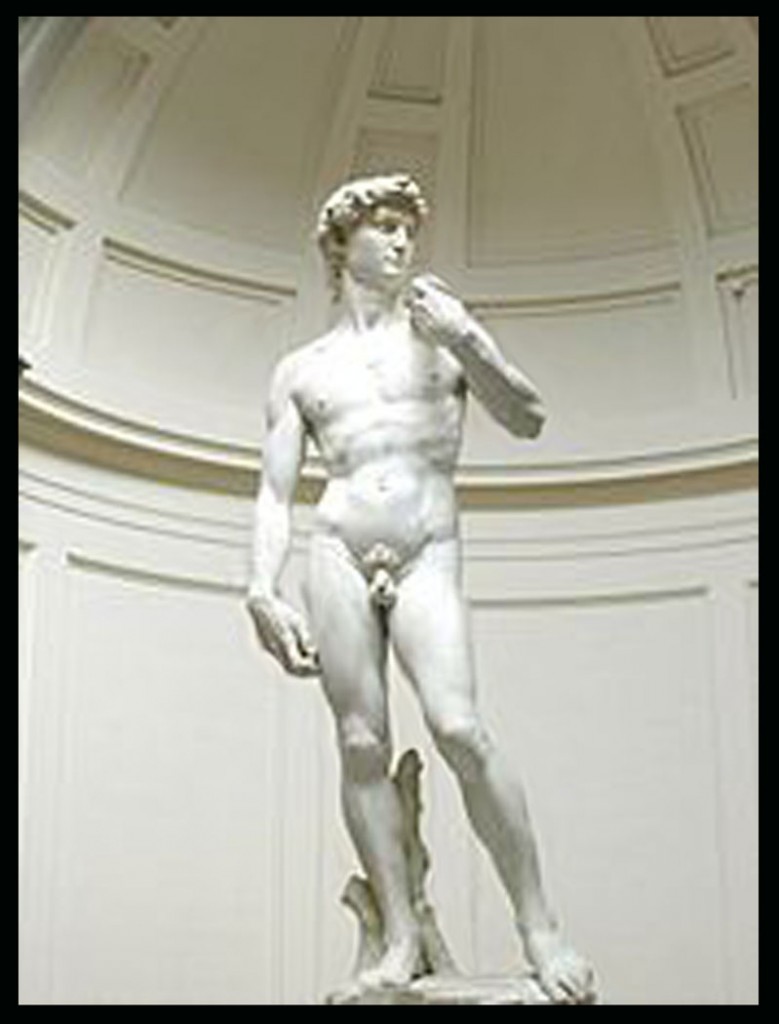 David of Michelangelo.
David of Michelangelo.
Leonardo da Vinci painted two of the most famous works of Renaissance art, the wallpainting The Last Supper and the portrait Mona Lisa. Leonardo had one of the most searching minds in all history. He wanted to know how everything that he saw in nature worked. In over 4,000 pages of notebooks, he drew detailed diagrams and wrote his observations. Leonardo made careful drawings of human skeletons and muscles, trying to learn how the body worked. Due to his inquiring mind, Leonardo has become a symbol of the Renaissance spirit of learning and intellectual curiosity.[6]
The creator of High Renaissance architecture was Donato Bramante, who came to Rome in 1499, when he was 55. His first Roman masterpiece, the Tempietto (1502) at San Pietro in Montorio, is a centralized dome structure that recalls Classical temple architecture. Pope Julius II chose Bramante to be papal architect, and together they devised a plan to replace the 4th-century Old St. Peter’s with a new church of gigantic dimensions. The project was not completed, however, until long after Bramante’s death.
Humanistic studies continued under the powerful popes of the High Renaissance, Julius II and Leo X, as did the development of polyphonic music. The Sistine Choir, which p\d, drew musicians and singers from all of Italy and northern Europe. Among the most famous composers who became members were Josquin des Prez and Giovanni Pierluigi da Palestrina.
Mannerism
Main article: Mannerism
Mannerism was an elegant, courtly style. It flourished in Florence, Italy, where its leading representatives were Giorgio Vasari and Bronzino. The style was introduced to the French court by Rosso Fiorentino and by Francesco Primaticcio. The Venetian painter Tintoretto was influenced by the style.
The mannerist approach to painting also influenced other arts.
In architecture, the work of Italian architect Giulio Romano is a notable example. The Italian Benvenuto Cellini and Flemish born Giambologna were the style’s chief representatives in sculpture.[7]
Some historians regard this period as a degeneration of High Renaissance classicism or even as an interlude between High Renaissance and baroque, in which case the dates are usually from c. 1520 to 1600, and it is considered a positive style complete in itself.
Baroque and Rococo Art
Caravaggio’s The Calling of St. Matthew
Main articles: Italian Baroque art and Italian Rococo art
In the early 17th century Rome became the center of a renewal of Italian dominance in the arts. In Parma, Antonio da Correggio decorated church vaults with lively figures floating softly on clouds — a scheme that was to have a profound influence on baroque ceiling paintings. The stormy chiaroscuro paintings of Caravaggio and the robust, illusionistic paintings of the Bolognese Carracci family gave rise to the baroque period in Italian art. Domenichino, Francesco Albani, and later Andrea Sacchi were among those who carried out the classical implications in the art of the Carracci.
On the other hand, Guido Reni, Guercino, Orazio Gentileschi, Giovanni Lanfranco, and later Pietro da Cortona and Andrea Pozzo, while thoroughly trained in a classical-allegorical mode, were at first inclined to paint dynamic compositions full of gesticulating figures in a manner closer to that of Caravaggio. The towering virtuoso of baroque exuberance and grandeur in sculpture and architecture was Gian Lorenzo Bernini. Toward 1640 many of the painters leaned toward the classical style that had been brought to the fore in Rome by the French expatriate Nicolas Poussin. The sculptors Alessandro Algardi and François Duquesnoy also tended toward the classical. Notable late baroque artists include the Genoese Giovanni Battista Gaulli and the Neapolitans Luca Giordano and Francesco Solimena.
The leading lights of the 18th century came from Venice. Among them were the brilliant exponent of the rococo style, Giovanni Battista Tiepolo; the architectural painters Francesco Guardi, Canaletto, Giovanni Battista Piazzetta, and Bernardo Bellotto; and the engraver of Roman antiquities, Giovanni Battista Piranesi.
Italian Neoclassical and 19th-century art
Caravaggio’s The Calling of St. Matthew
Main articles: Italian Baroque art and Italian Rococo art
In the early 17th century Rome became the center of a renewal of Italian dominance in the arts. In Parma, Antonio da Correggio decorated church vaults with lively figures floating softly on clouds — a scheme that was to have a profound influence on baroque ceiling paintings. The stormy chiaroscuro paintings of Caravaggio and the robust, illusionistic paintings of the Bolognese Carracci family gave rise to the baroque period in Italian art. Domenichino, Francesco Albani, and later Andrea Sacchi were among those who carried out the classical implications in the art of the Carracci.
On the other hand, Guido Reni, Guercino, Orazio Gentileschi, Giovanni Lanfranco, and later Pietro da Cortona and Andrea Pozzo, while thoroughly trained in a classical-allegorical mode, were at first inclined to paint dynamic compositions full of gesticulating figures in a manner closer to that of Caravaggio. The towering virtuoso of baroque exuberance and grandeur in sculpture and architecture was Gian Lorenzo Bernini. Toward 1640 many of the painters leaned toward the classical style that had been brought to the fore in Rome by the French expatriate Nicolas Poussin. The sculptors Alessandro Algardi and François Duquesnoy also tended toward the classical. Notable late baroque artists include the Genoese Giovanni Battista Gaulli and the Neapolitans Luca Giordano and Francesco Solimena.
The leading lights of the 18th century came from Venice. Among them were the brilliant exponent of the rococo style, Giovanni Battista Tiepolo; the architectural painters Francesco Guardi, Canaletto, Giovanni Battista Piazzetta, and Bernardo Bellotto; and the engraver of Roman antiquities, Giovanni Battista Piranesi.
Italian Neoclassical and 19th-century art
Main article: Italian Neoclassical and 19th century art
Just like in other parts of Europe, Italian Neoclassical art was mainly based on the principles of Ancient Roman and Ancient Greek art and architecture, but also by the Italian Renaissance architecture and its basics, such as in the Villa Capra “La Rotonda”.
Classicism and Neoclassicism in Italian art and architecture developed during the Italian Renaissance, notably in the writings and designs of Leon Battista Alberti and the work of Filippo Brunelleschi. It places emphasis on symmetry, proportion, geometry and the regularity of parts as they are demonstrated in the architecture of Classical antiquity and in particular, the architecture of Ancient Rome, of which many examples remained. Orderly arrangements of columns, pilasters and lintels, as well as the use of semicircular arches, hemispherical domes, niches and aedicules replaced the more complex proportional systems and irregular profiles of medieval buildings. This style quickly spread to other Italian cities and later to the rest of continental Europe.
The sculptor Antonio Canova was a leading exponent of the neoclassic style. Internationally famous, he was regarded as the most brilliant sculptor in Europe.[8]
The Macchiaioli
Main article: Macchiaioli
Italy produced its own form of Impressionism, the Macchiaioli artists, who were actually there first, before the more famous Impressionists: Giovanni Fattori, Silvestro Lega, Telemaco Signorini, Giuseppe Abbati. The Macchiaioli artists were forerunners to Impressionism in France. They believed that areas of light and shadow, or macchie (literally patches or spots) were the chief components of a work of art. The word macchia was commonly used by Italian artists and critics in the 19th century to describe the sparkling quality of a drawing or painting, whether due to a sketchy and spontaneous execution or to the harmonious breadth of its overall effect.
A hostile review published on November 3, 1862 in the journal Gazzetta del Popolo marks the first appearance in print of the term Macchiaioli.[9] The term carried several connotations: it mockingly in the booty finished works were no more than sketches, and recalled the phrase “darsi alla macchia”, meaning, idiomatically, to hide in the bushes or scrubland. The artists did, in fact, paint much of their work in these wild areas. This sense of the name also identified the artists with outlaws, reflecting the traditionalists’ view that new school of artists was working outside the rules of art, according to the strict laws defining artistic expression at the time.
Italian modern and contemporary art
Early in the 20th century the exponents of futurism developed a dynamic vision of the modern world while Giorgio de Chirico expressed a strange metaphysical quietude and Amedeo Modigliani joined the school of Paris. Gifted later modern artists include the sculptors Giacomo Manzù, Marino Marini, the still-life painter Giorgio Morandi, and the iconoclastic painter Lucio Fontana. In the second half of the 20th century, Italian designers, particularly those of Milan, have profoundly influenced international styles with their imaginative and ingenious functional works.
Futurism
Main article: Futurism
The Street Enters the House by Umberto Boccioni.
Futurism was an Italian art movement that flourished from 1909 to about 1916. It was the first of many art movements that tried to break with the past in all areas of life. Futurism glorified the power, speed, and excitement that characterized the machine age. From the French Cubist painters and multiple-exposure photography, the Futurists learned to break up realistic forms into multiple images and overlapping fragments of color. By such means, they attempted to portray the energy and speed of modern life. In literature, Futurism demanded the abolition of traditional sentence structures and verse forms.[10]
Futurism was first announced on Feb. 20, 1909, when the Paris newspaper Le Figaro published a manifesto by the Italian poet and editor Filippo Tommaso Marinetti. (See the Manifesto of Futurism.) Marinetti coined the word Futurism to reflect his goal of discarding the art of the past and celebrating change, originality, and innovation in culture and society. Marinetti’s manifesto glorified the new technology of the automobile and the beauty of its speed, power, and movement. Exalting violence and conflict, he called for the sweeping repudiation of traditional values and the destruction of cultural institutions such as museums and libraries. The manifesto’s rhetoric was passionately bombastic; its aggressive tone was purposely intended to inspire public anger and arouse controversy.
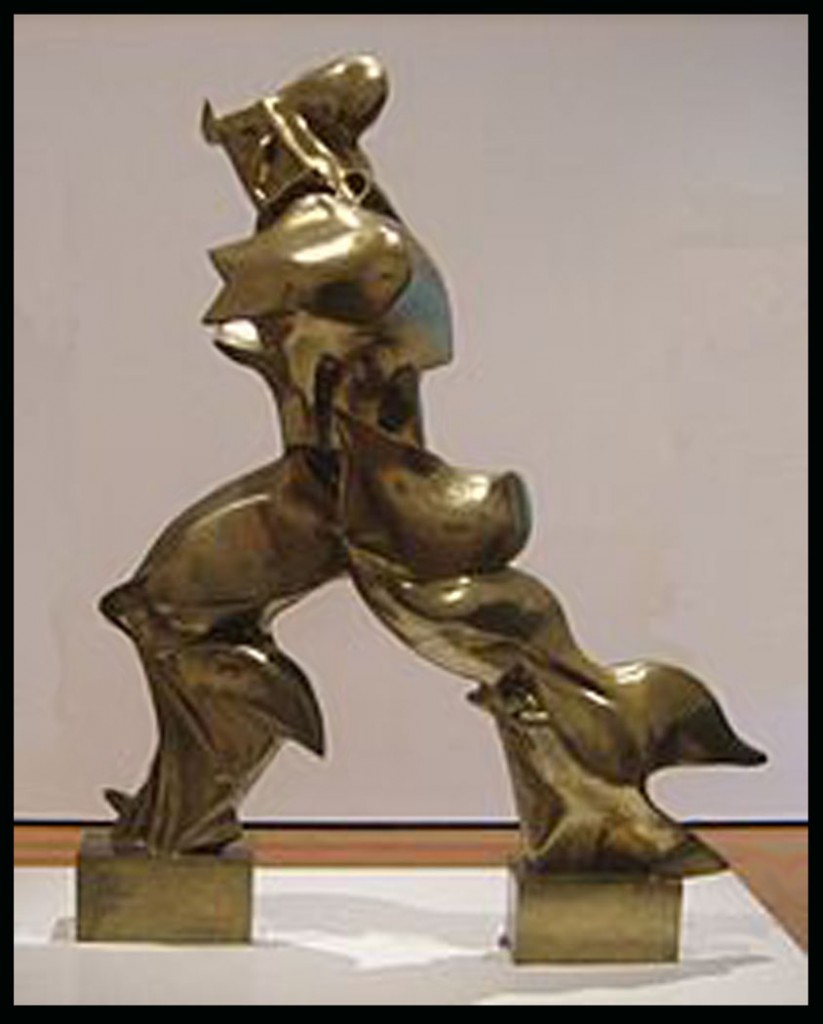 Unique Forms of Continuity in Space by Umberto Boccioni.
Unique Forms of Continuity in Space by Umberto Boccioni.
Marinetti’s manifesto inspired a group of young painters in Milan to apply Futurist ideas to the visual arts. Umberto Boccioni, Carlo Carrà, Luigi Russolo, Giacomo Balla, and Gino Severini published several manifestos on painting in 1910. Like Marinetti, they glorified originality and expressed their disdain for inherited artistic traditions.
Boccioni also became interested in sculpture, publishing a manifesto on the subject in the spring of 1912. He is considered to have most fully realized his theories in two sculptures, Development of a Bottle in Space (1912), in which he represented both the inner and outer contours of a bottle, and Unique Forms of Continuity in Space (1913), in which a human figure is not portrayed as one solid form but is instead composed of the multiple planes in space through which the figure moves.
Futurist principles extended to architecture as well. Antonio Sant’Elia formulated a Futurist manifesto on architecture in 1914. His visionary drawings of highly mechanized cities and boldly modern skyscrapers prefigure some of the most imaginative 20th-century architectural planning.
Boccioni, who had been the most talented artist in the group,[11] and Sant’Elia both died during military service in 1916. Boccioni’s death, combined with expansion of the group’s personnel and the sobering realities of the devastation caused by World War I, effectively brought an end to the Futurist movement as an important historical force in the visual arts.
Metaphysical art
Main article: Metaphysical art
Metaphysical Painting is an Italian art movement, born in 1917 with the work of Carlo Carrà and Giorgio de Chirico in Ferrara. The word metaphysical, adopted by De Chirico himself, is core to the poetics of the movement.
They depicted a dreamlike imagery, with figures and objects seemingly frozen in time. Metaphysical Painting artists accept the representation of the visible world in a traditional perspective space, but the unusual arrangement of human beings as dummy-like models, objects in strange, illogical contexts, the unreal lights and colors, the unnatural static of still figures.
Novecento Italiano
Main article: Novecento Italiano
Novecento movement, group of Italian artists, formed in 1922 in Milan, that advocated a return to the great Italian representational art of the past.
The founding members of the Novecento (Italian: 20th-century) movement were the critic Margherita Sarfatti and seven artists: Anselmo Bucci, Leonardo Dudreville, Achille Funi, Gian Emilio Malerba, Piero Marussig, Ubaldo Oppi, and Mario Sironi. Under Sarfatti’s leadership, the group sought to renew Italian art by rejecting European avant-garde movements and embracing Italy’s artistic traditions.
Other artists associated with the Novecento included the sculptors Marino Marini and Arturo Martini and the painters Ottone Rosai, Massimo Campigli, Carlo Carrà, and Felice Casorati.
Spatialism
Main article: Spatialism
Movement founded by the Italian artist Lucio Fontana as the movimento spaziale, its tenets were repeated in manifestos between 1947 and 1954.
Combining elements of concrete art, dada and tachism, the movement’s adherents rejected easel painting and embraced new technological developments, seeking to incorporate time and movement in their works. Fontana’s slashed and pierced paintings exemplify his theses.
Arte Povera
Main article: Arte Povera
Arte Povera an artistic movement that originated in Italy in the 1960s, combining aspects of conceptual, minimalist, and performance art, and making use of worthless or common materials such as earth or newspaper, in the hope of subverting the commercialization of art. The phrase is Italian, and means literally, “impoverished art.”
Transavantgarde
Main article: Transavantgarde
The term Transavantgarde is the invention of the Italian critic Achille Bonito Oliva. He has defined Transavantgarde art as traditional in format (that is, mostly painting or sculpture); apolitical; and, above all else, eclectic.
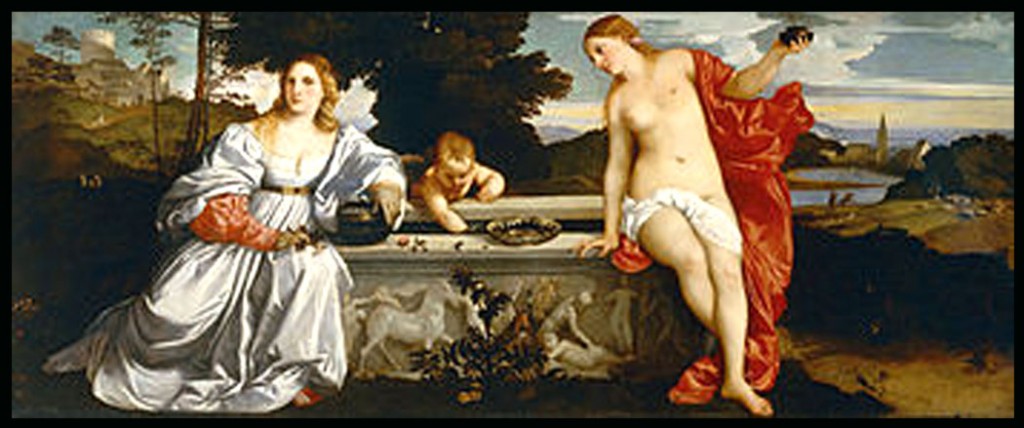 Titian’s Sacred and Profane Love
Titian’s Sacred and Profane Love
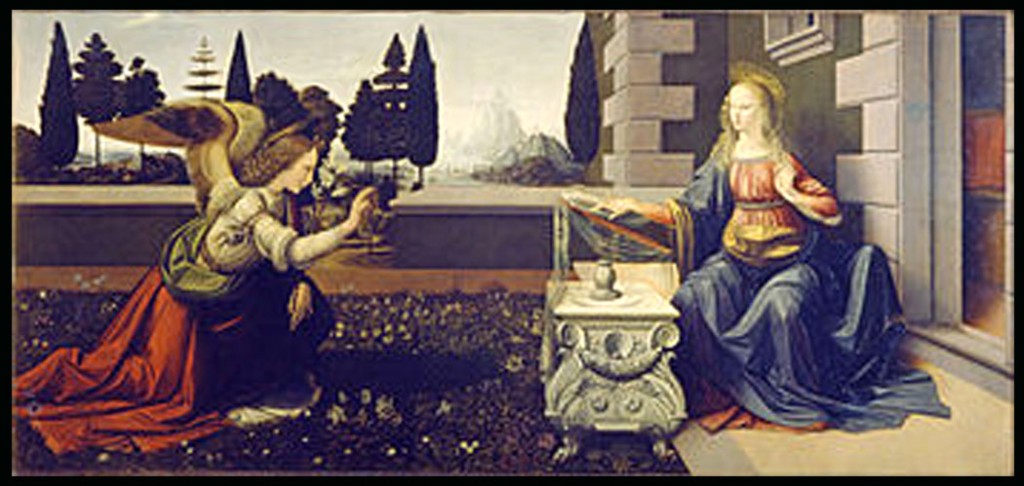 Leonardo da Vinci’s Annunciation
Leonardo da Vinci’s Annunciation
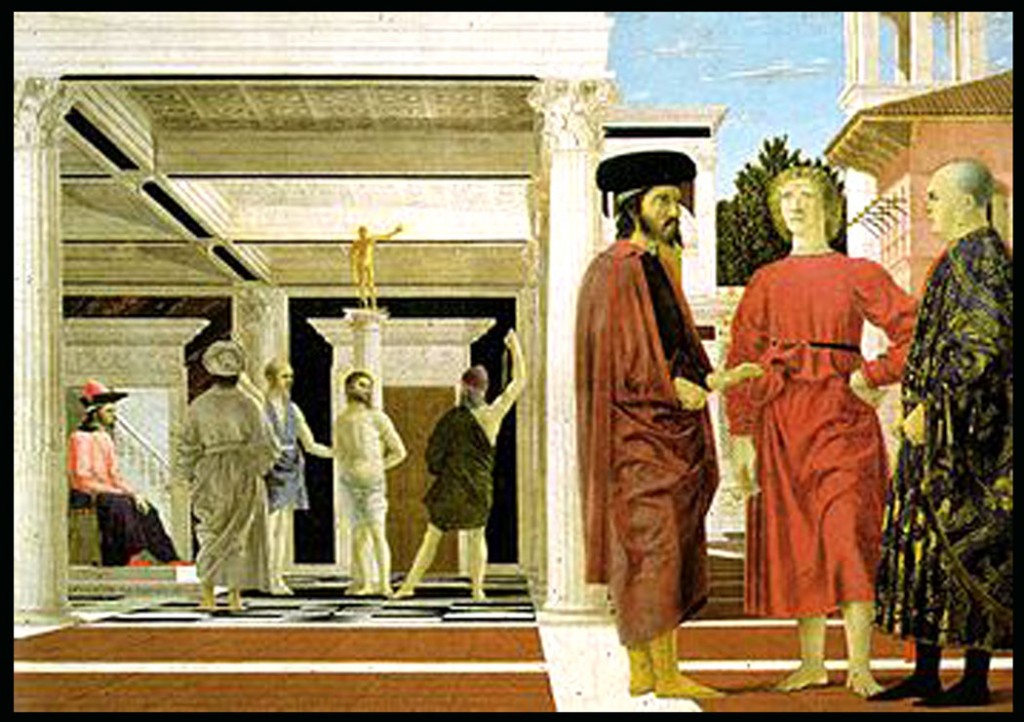 Piero della Francesca’s Flagellation
Piero della Francesca’s Flagellation
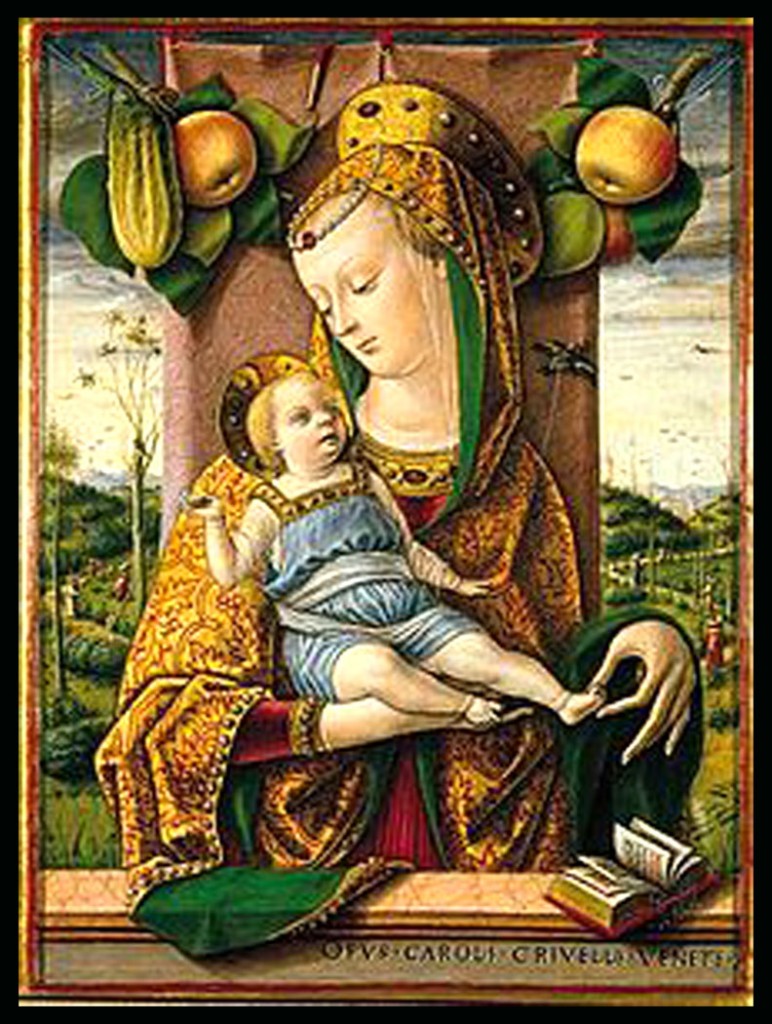 Madonna col Bambino di Carlo Crivelli
Madonna col Bambino di Carlo Crivelli
Galleria di Arte Moderna
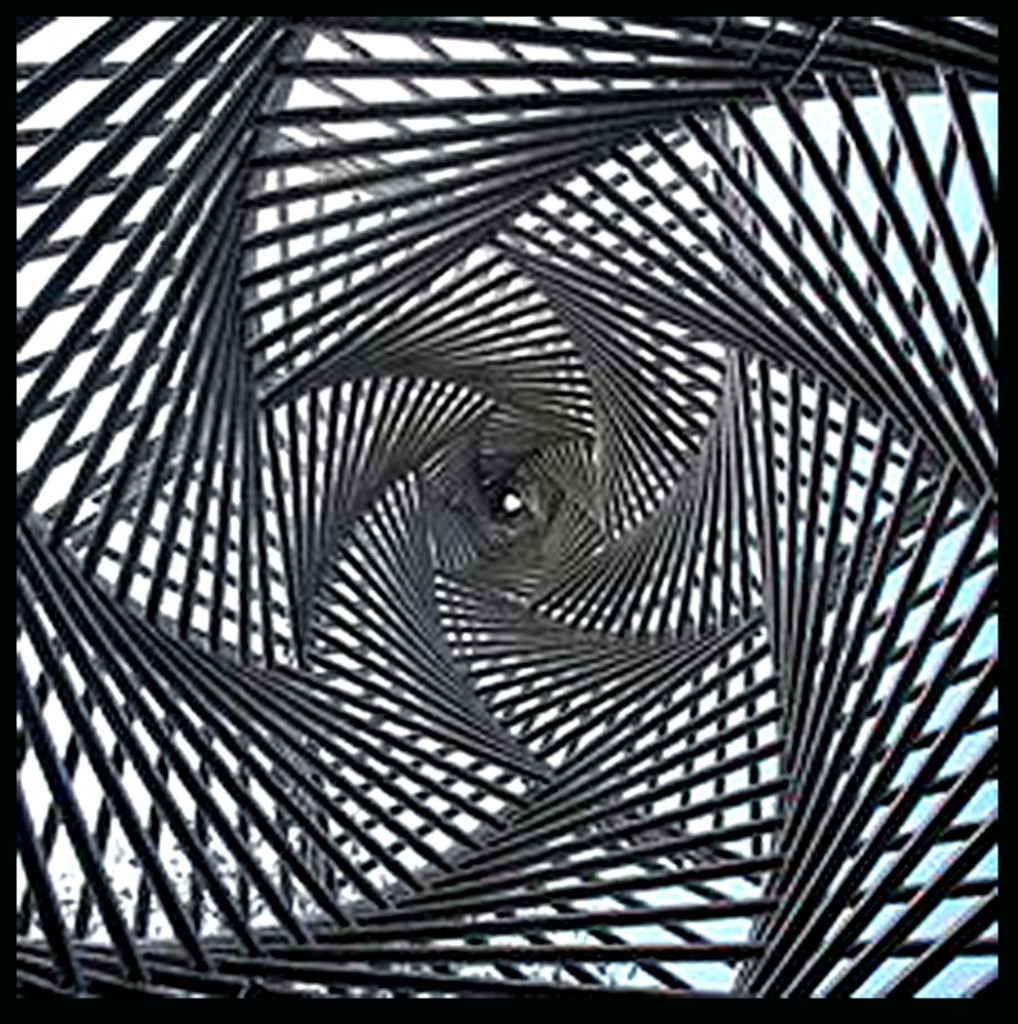 Monumento commemorativo della Notte dei cristalli a Gottinga; è un’opera di Corrado Cagli il cui modello è conservato nella Pinacoteca.
Monumento commemorativo della Notte dei cristalli a Gottinga; è un’opera di Corrado Cagli il cui modello è conservato nella Pinacoteca.
Andrea Lilli, una delle Storie di San Nicola
 Storia di Griselda: Gualtieri e i cittadini di Saluzzo del Pesellino
Storia di Griselda: Gualtieri e i cittadini di Saluzzo del Pesellino
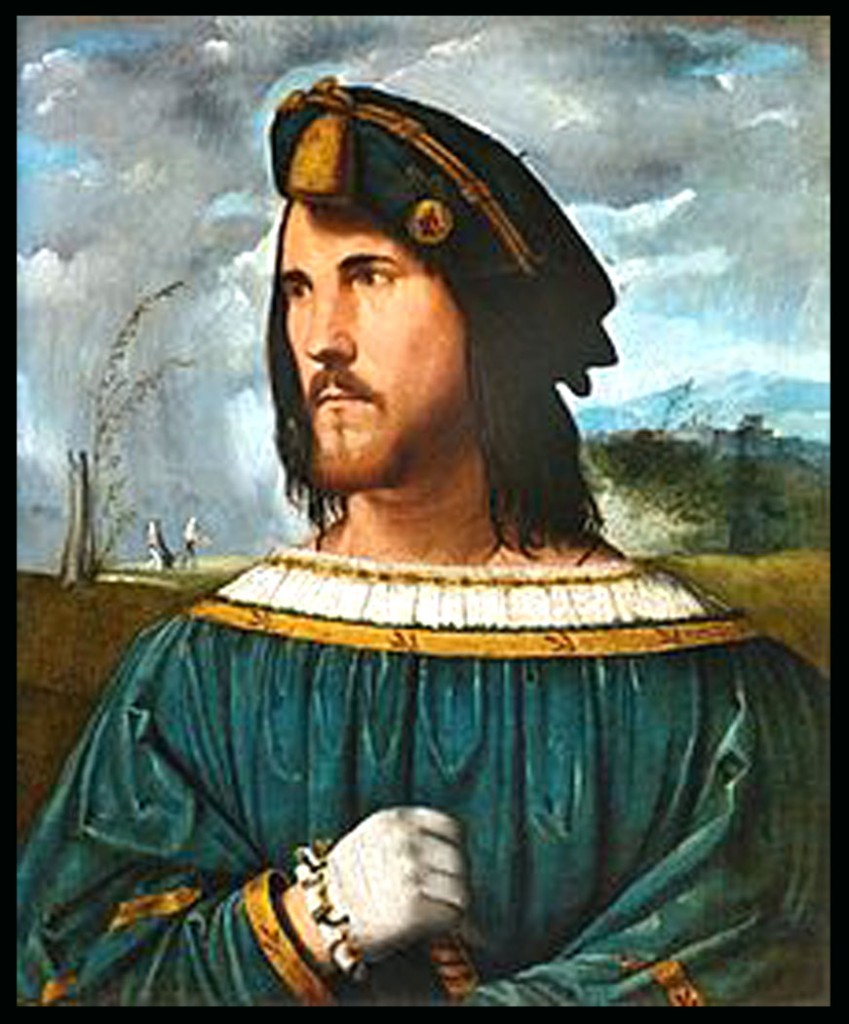 Ritratto virile (Cesare Borgia) di Altobello Melone
Ritratto virile (Cesare Borgia) di Altobello Melone
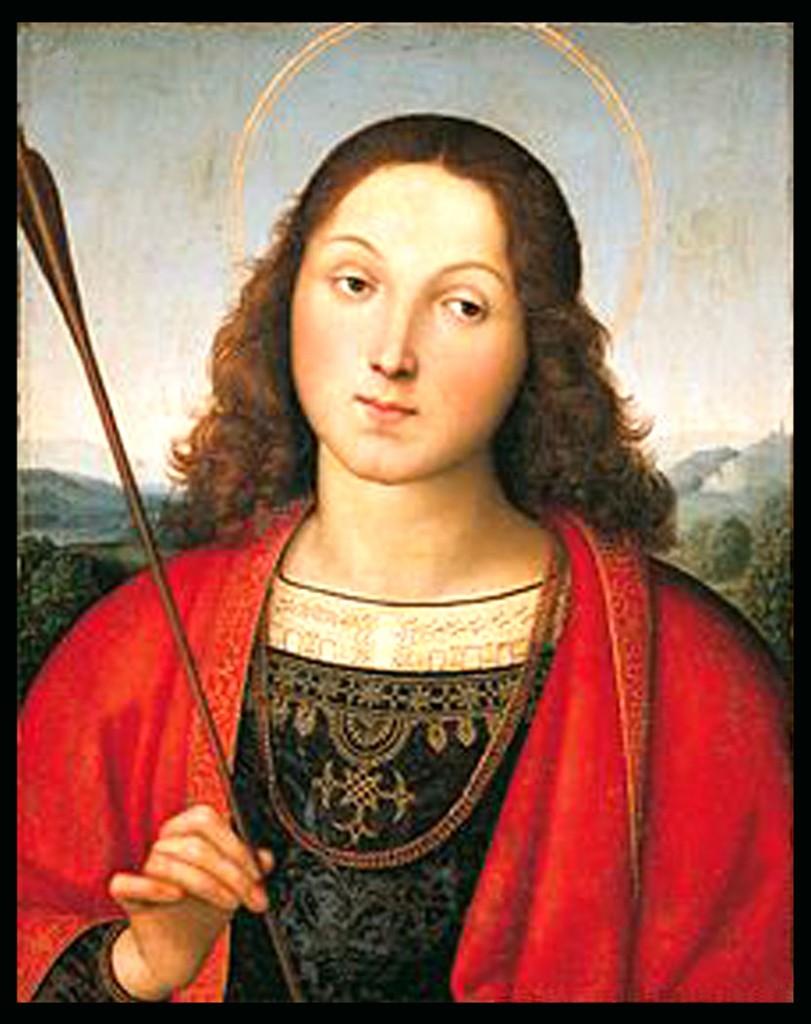 San Sebastiano di Raffaello Sanzio 1501/1502
San Sebastiano di Raffaello Sanzio 1501/1502
 Saint George and the Dragon by Vitale da Bologna.
Saint George and the Dragon by Vitale da Bologna.
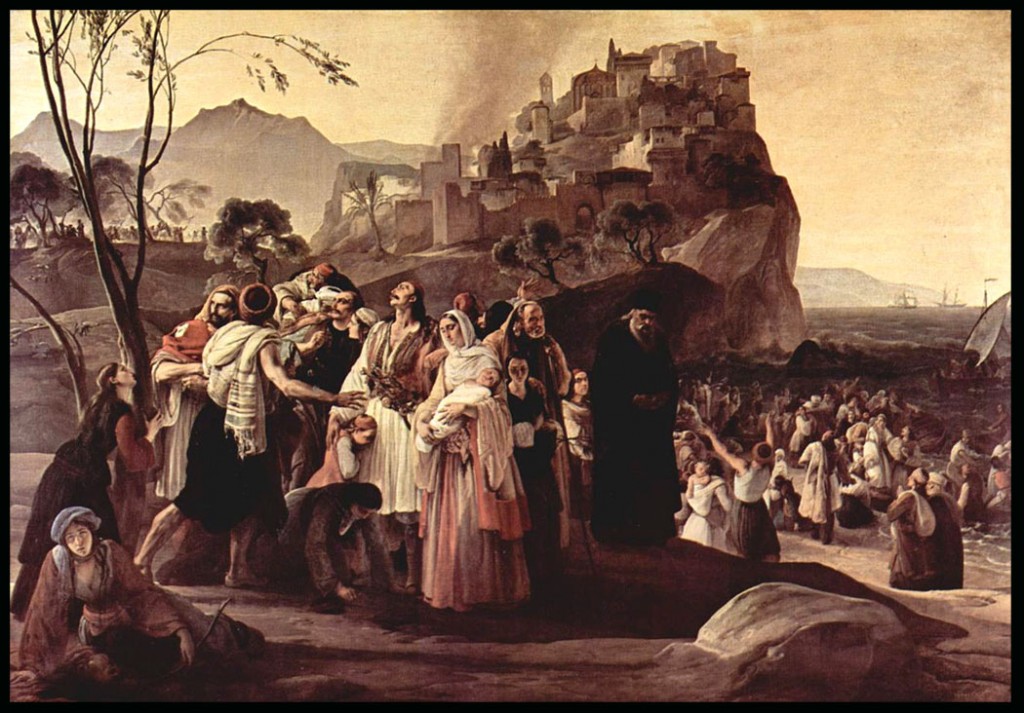 Italiano: Francesco Hayez, I profughi di Parga, 1831. Opera esposta nella Pinacoteca Tosio Martinengo a Brescia. The Refugees of Parga
Italiano: Francesco Hayez, I profughi di Parga, 1831. Opera esposta nella Pinacoteca Tosio Martinengo a Brescia. The Refugees of Parga
For more information please visit the following link: https://en.wikipedia.org/wiki/Italian_art
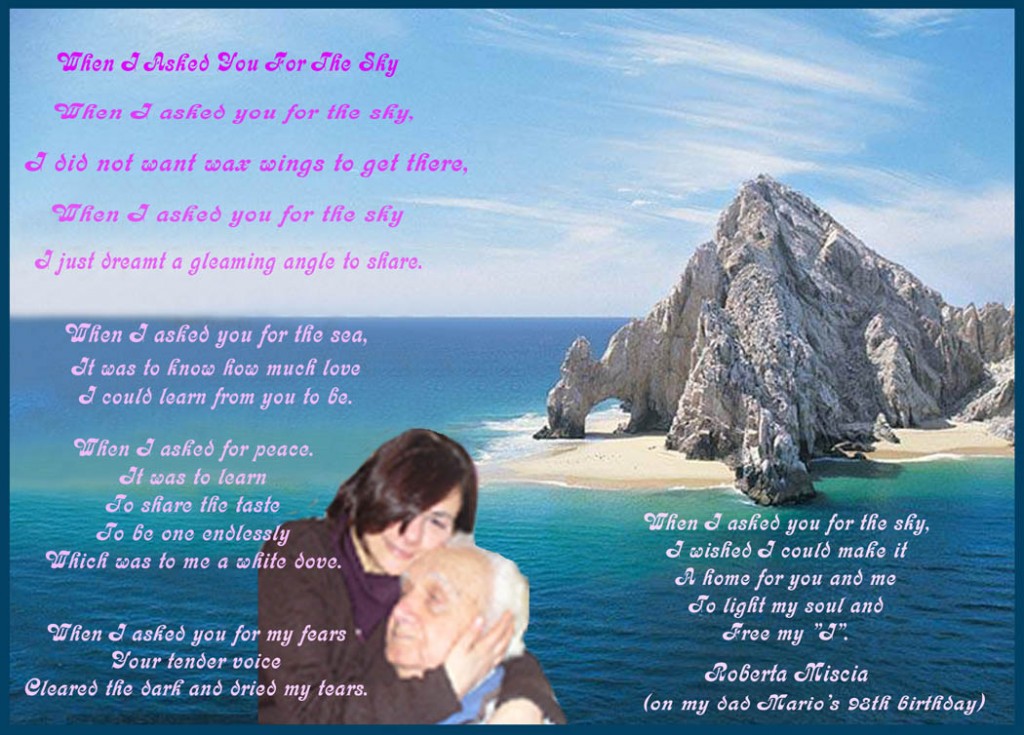
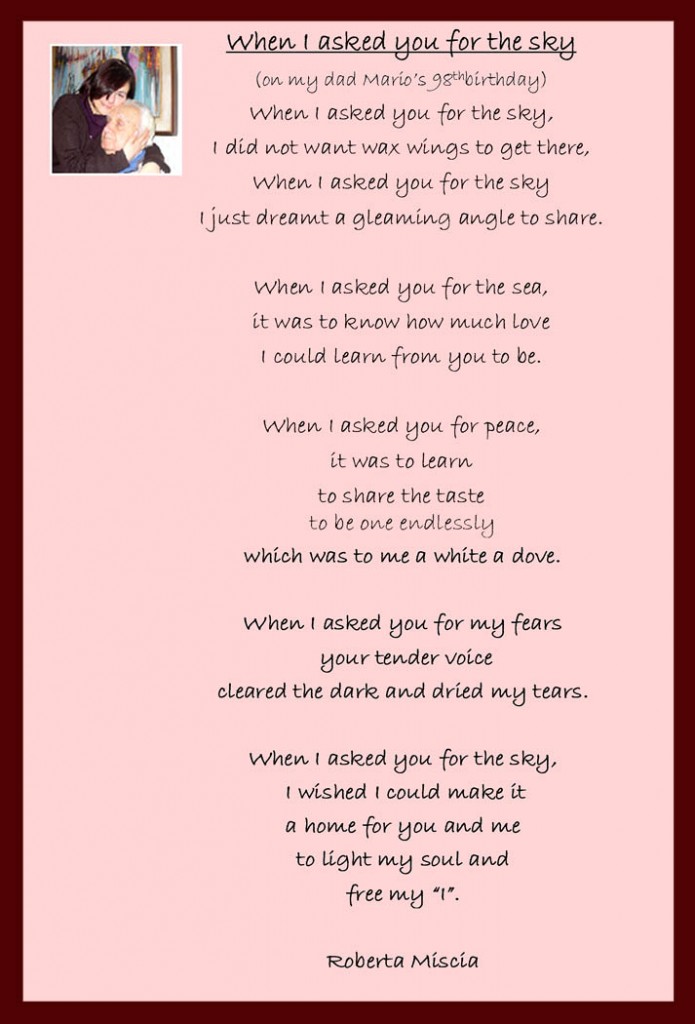
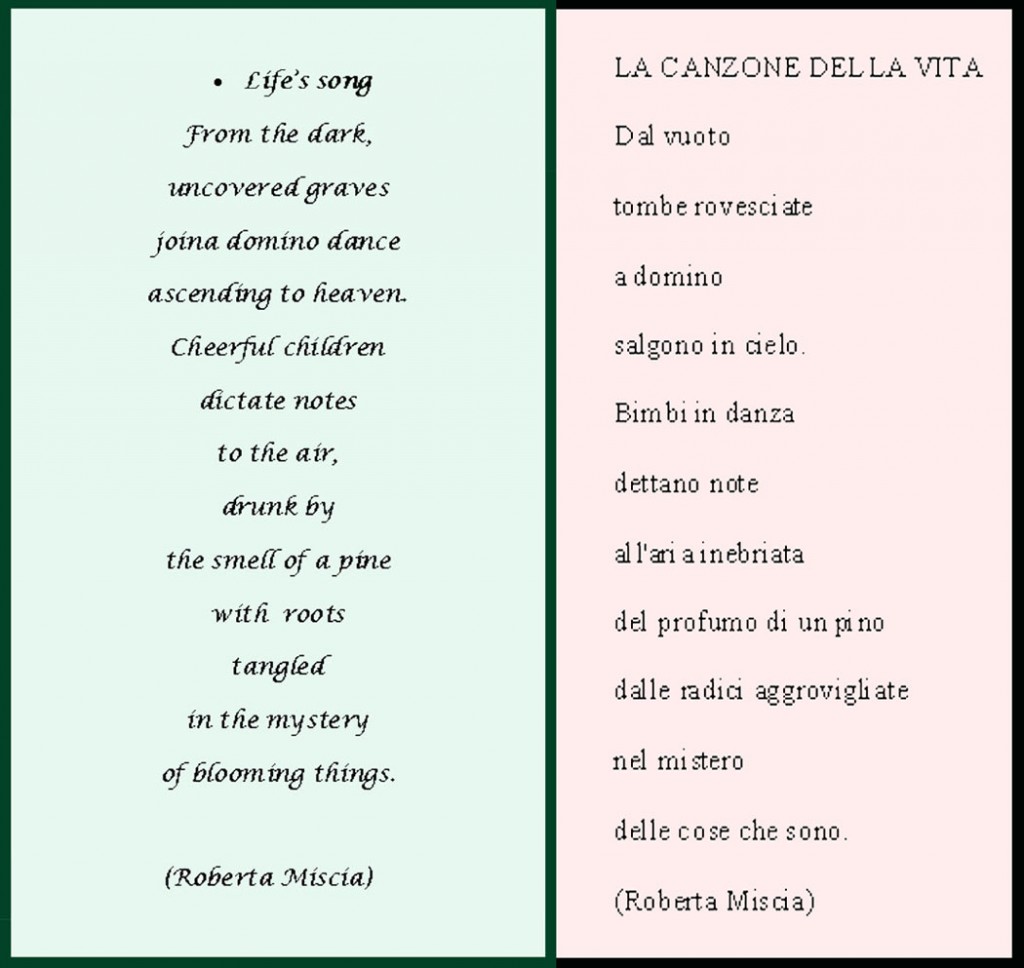

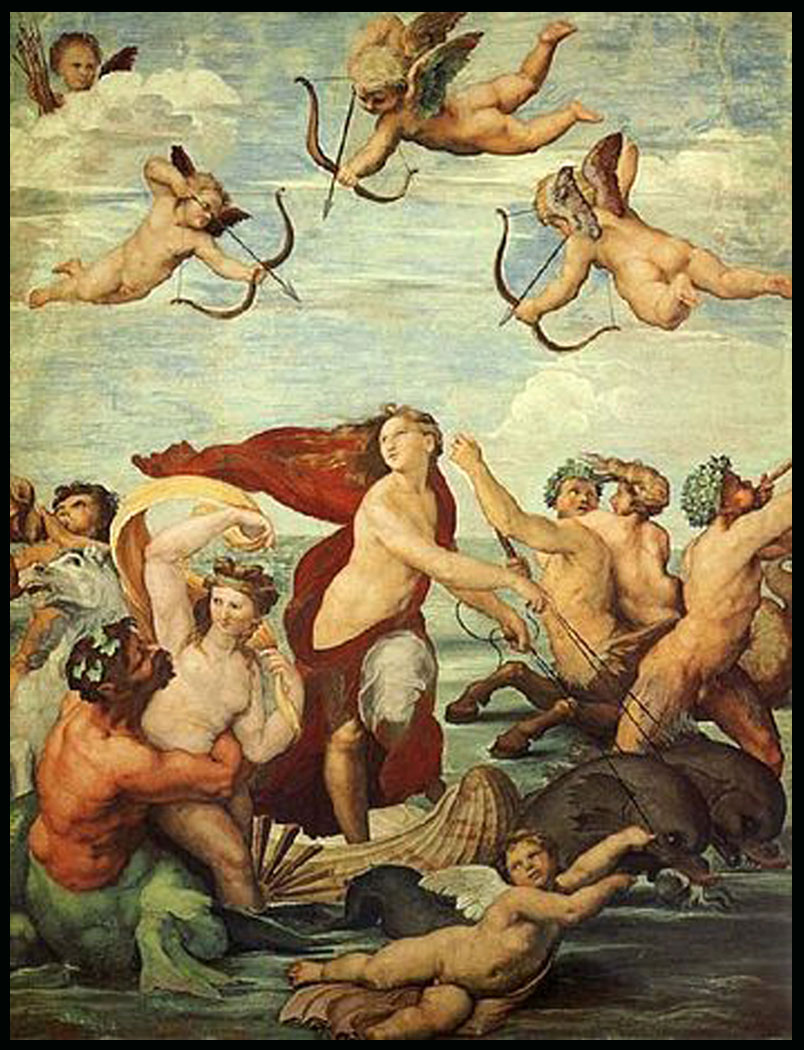 Raphael’s Galatea
Raphael’s Galatea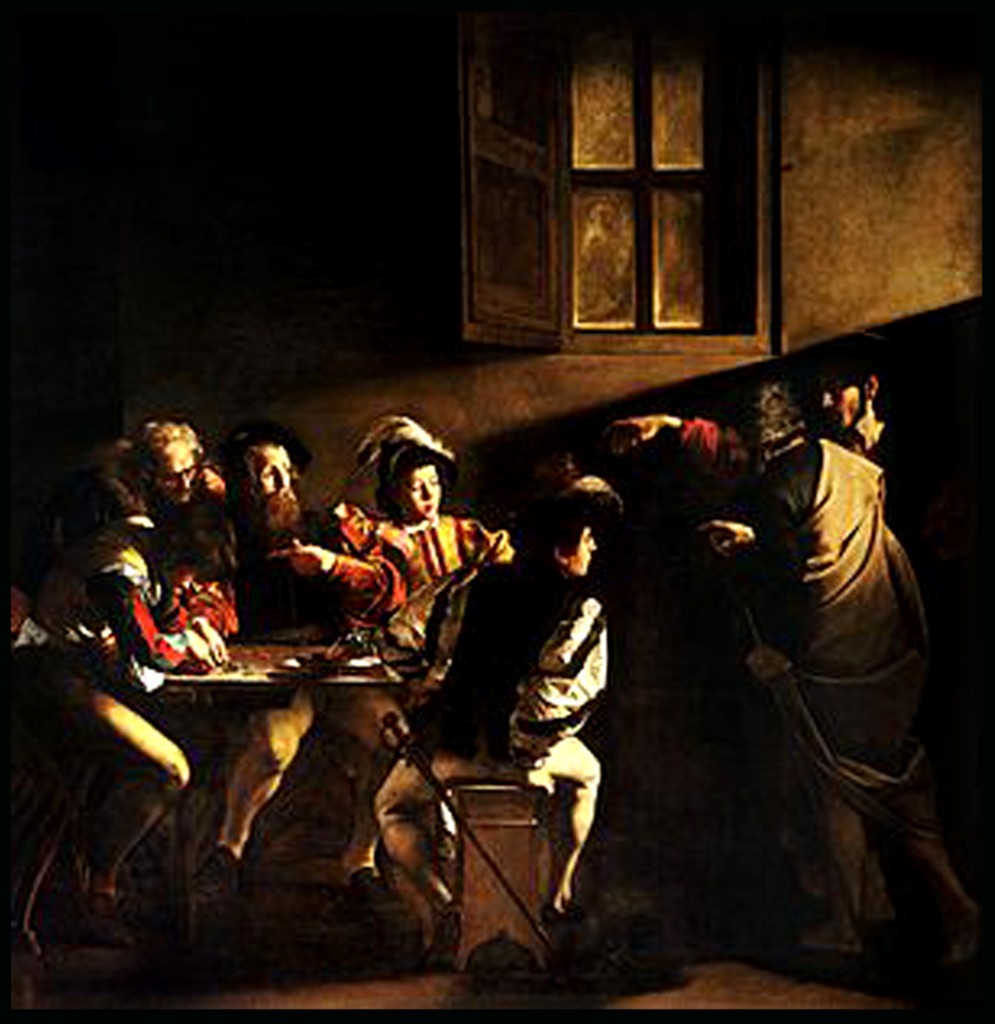
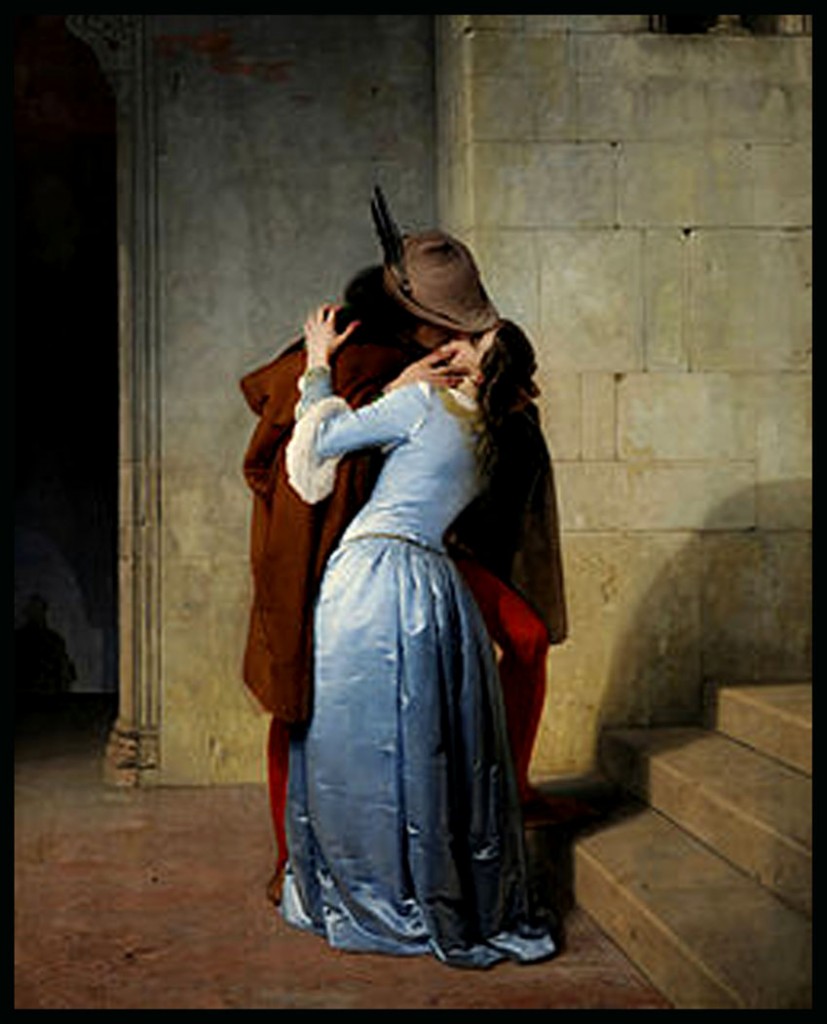 Francesco Hayez’s The Kiss
Francesco Hayez’s The Kiss Giorgione’s Tempest
Giorgione’s Tempest
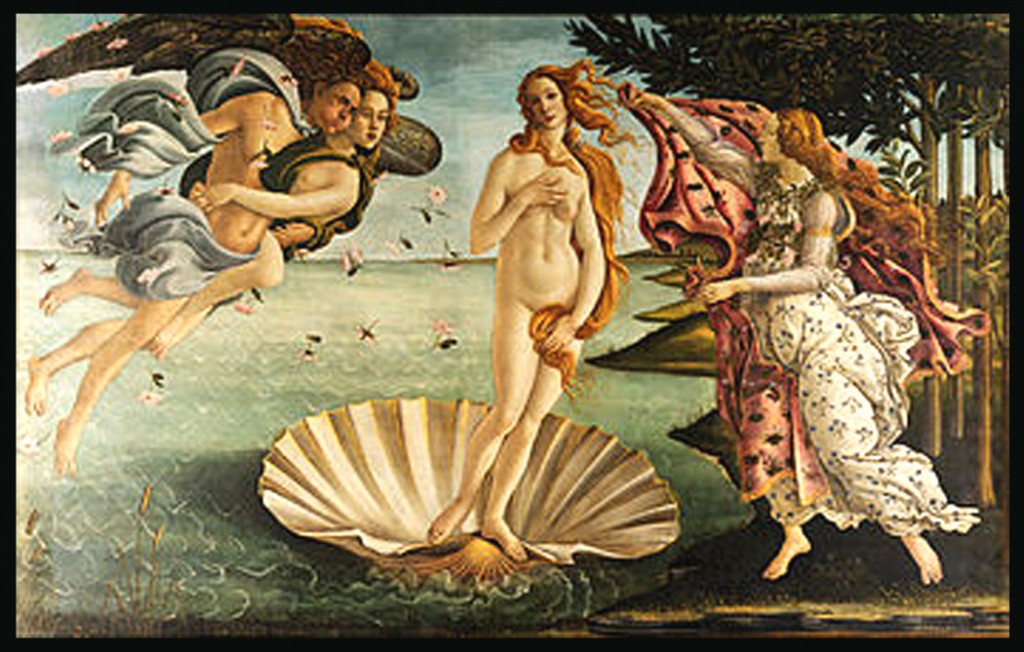
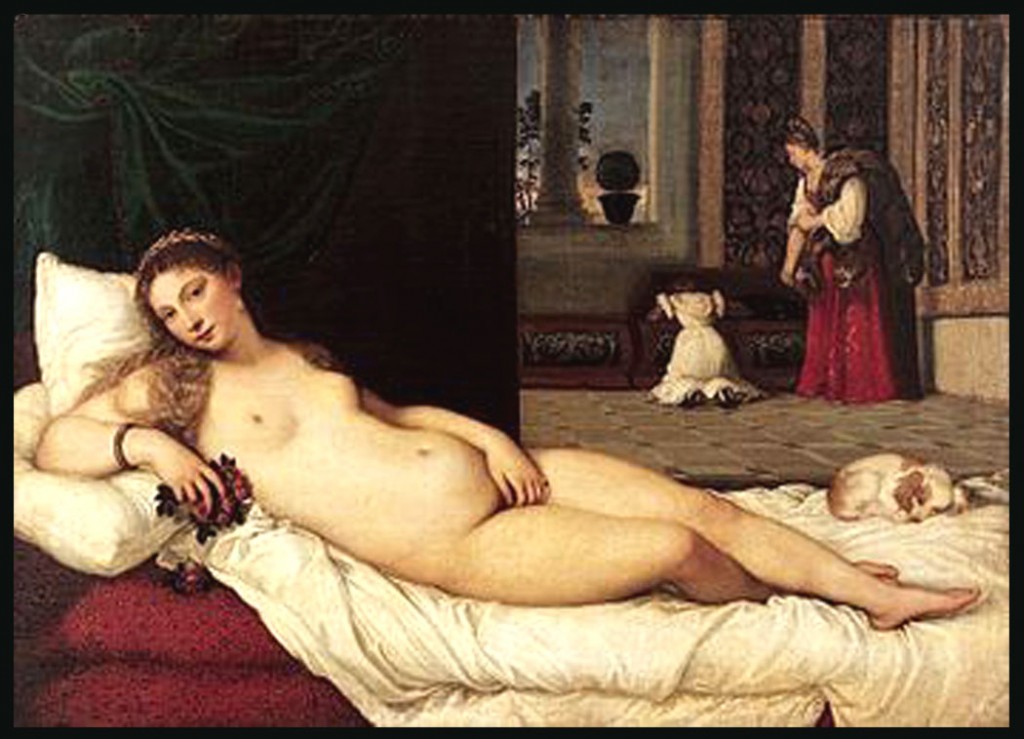
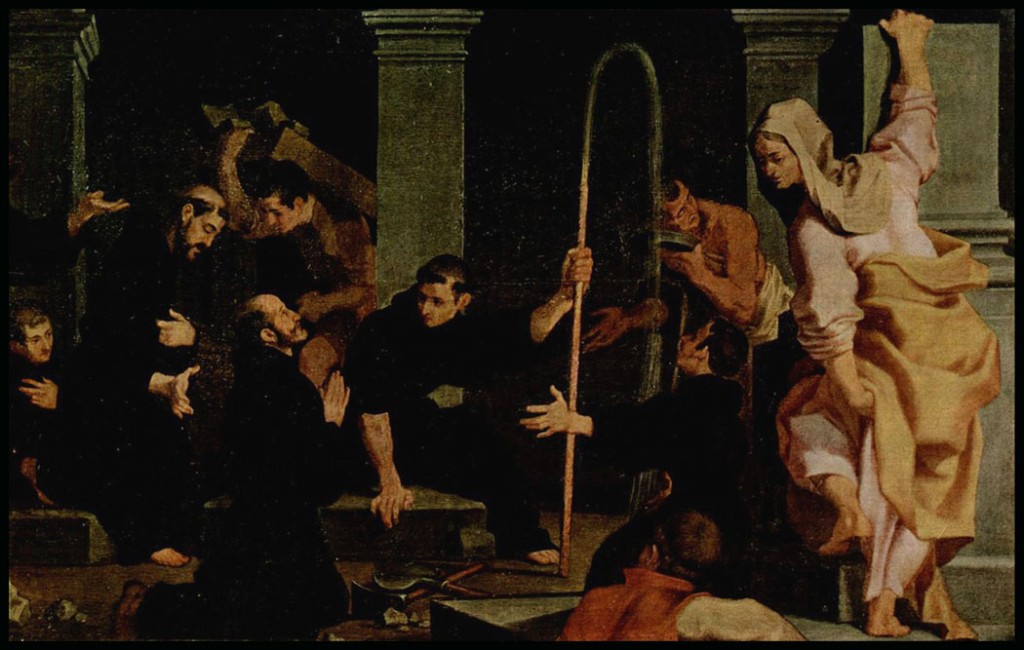
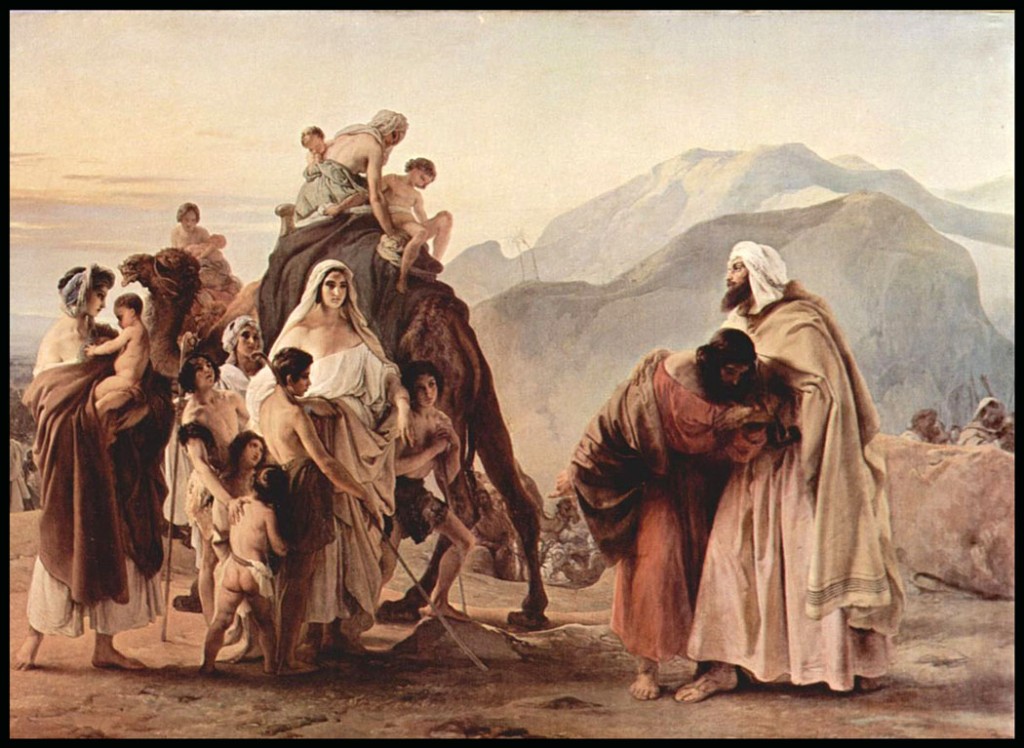
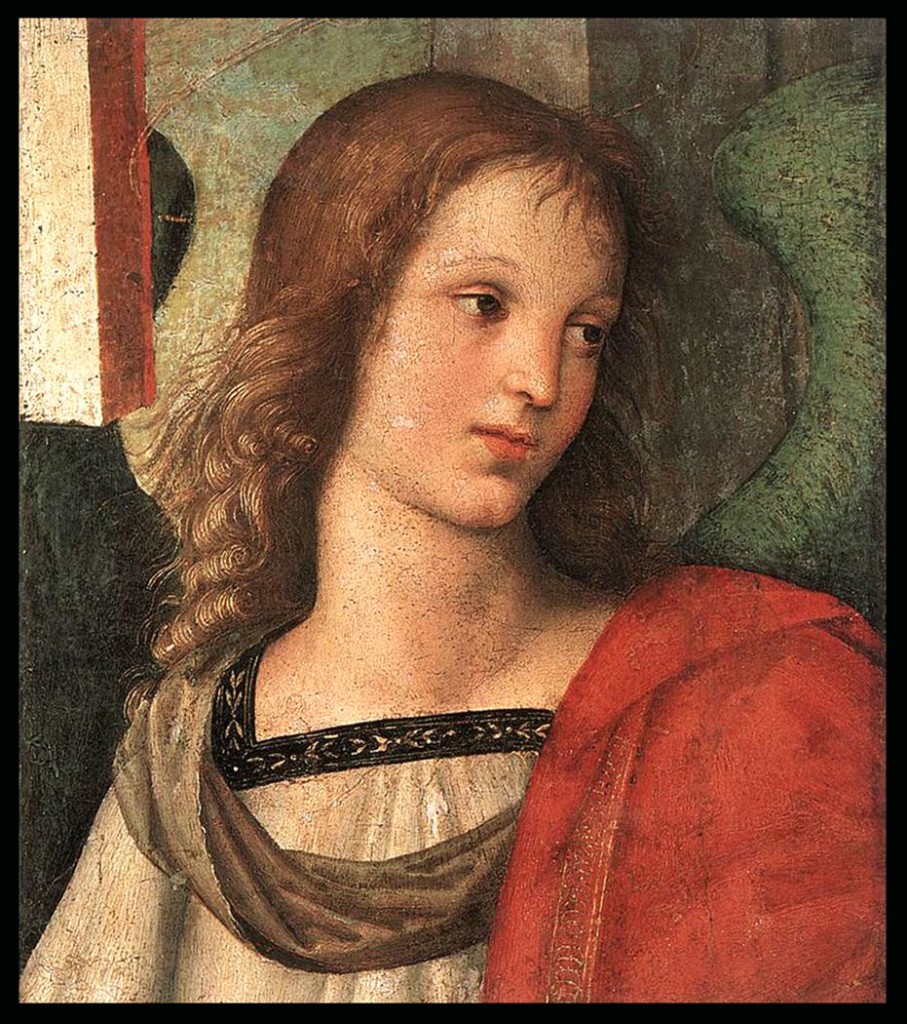
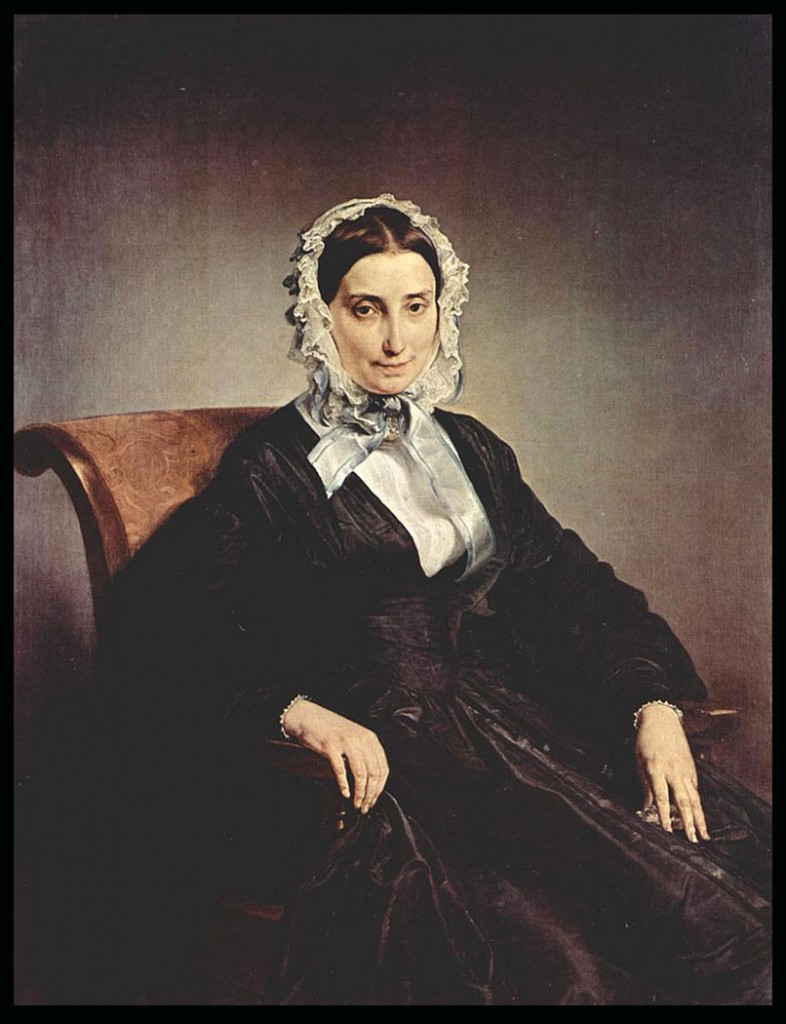

Leave a Reply